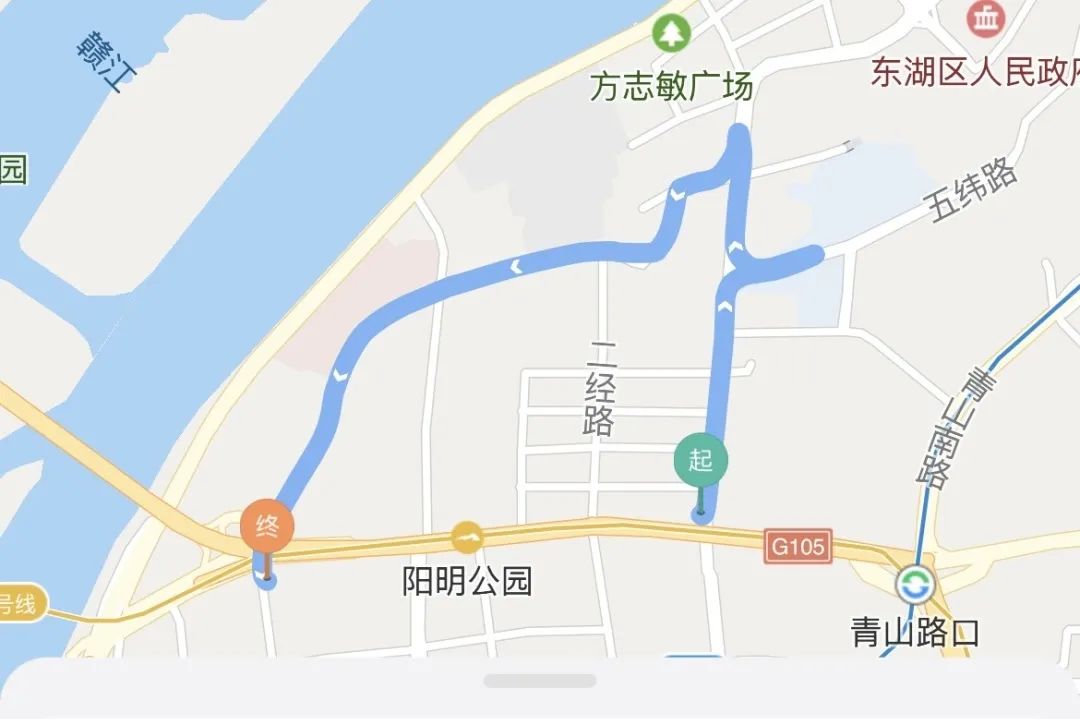
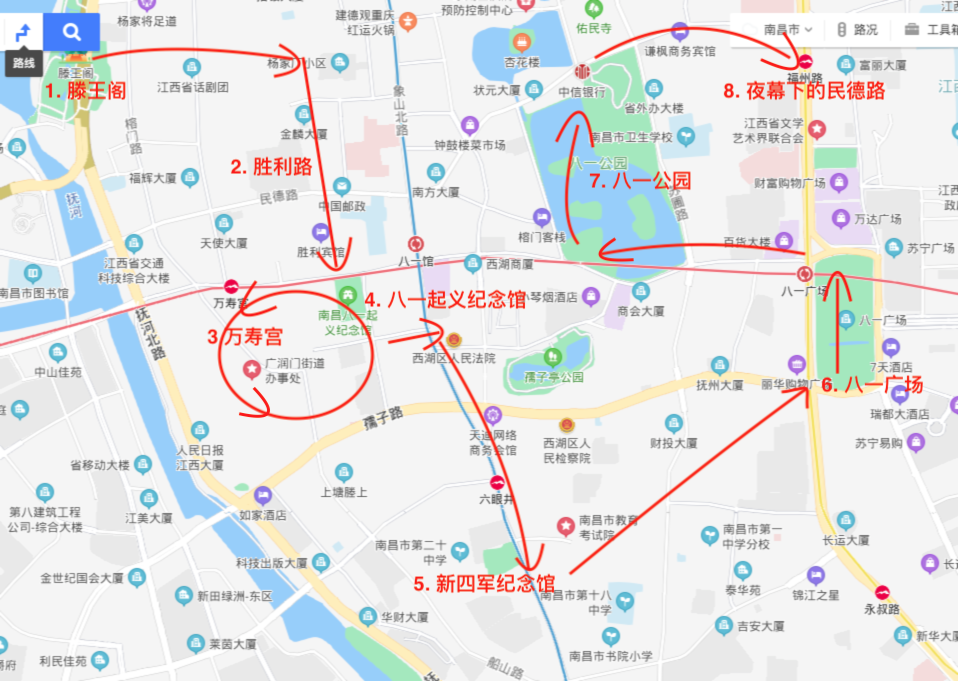
4
August 1st Uprising Memorial Hall
Coming to Nanchang without receiving red education is like going to Beijing without going to the Forbidden City, or going to Tianjin without eating Goubuli steamed buns. What’s worse than these is that many people have the impression that Nanchang is nothing but a red education base. Playable. When I walked to the August 1st Uprising Memorial Hall, mentally prepared to receive re-education with all the orthodox knowledge that had been given back to middle school history teachers, waves of "soldiers" lined up at the door.
I don’t know what organization was organizing the event. Hundreds of young people dressed in costumes, put on makeup, and held banners, crossed Zhongshan Road, preparing to visit the memorial hall. In an instant, I was submerged among them. I received the feeling in the crowd. The patriotism education surpasses all rote memorization and is comparable to participating in a passionate movement. Picking up a camera and taking pictures is like a war reporter, except that the "soldiers" are also busy taking selfies...
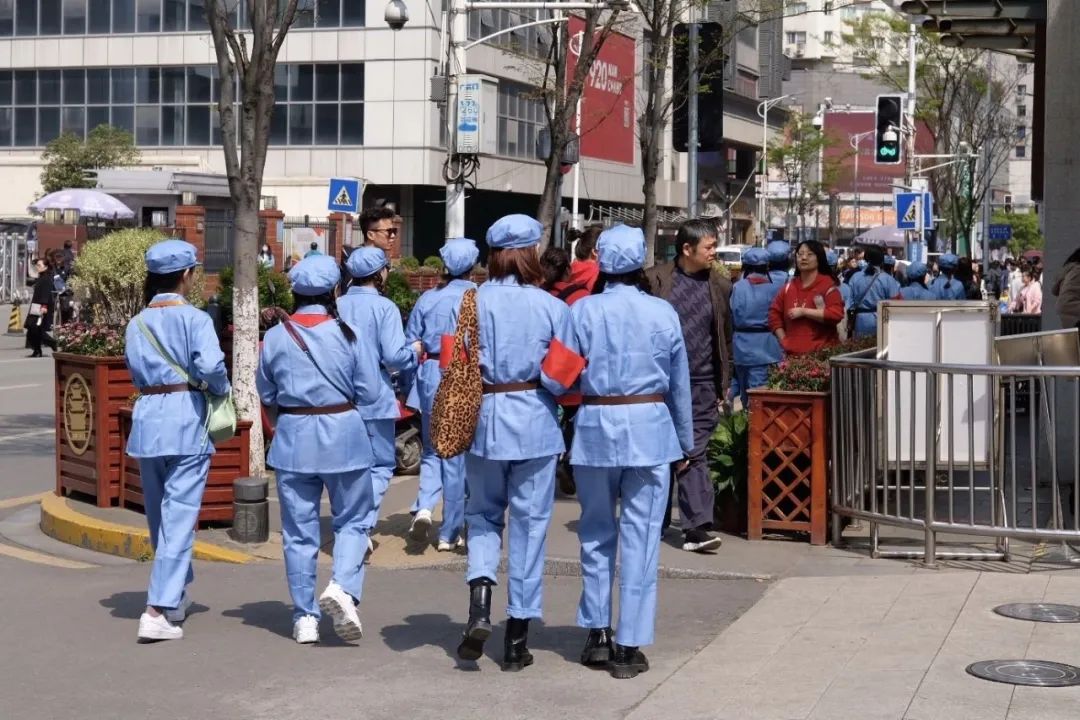
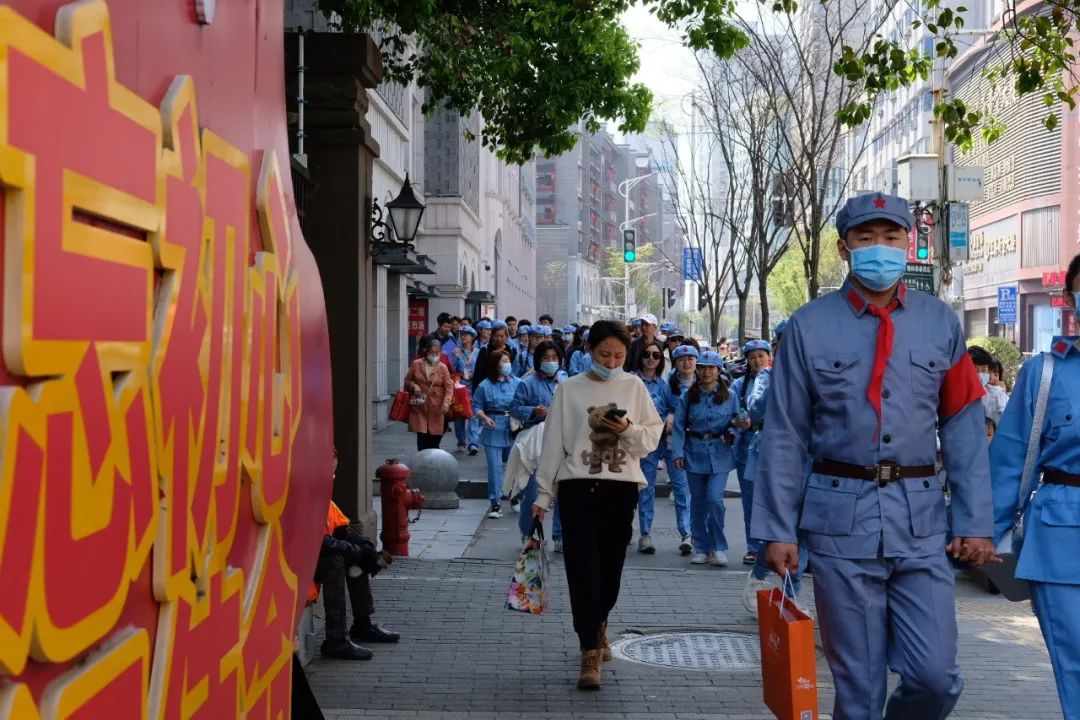


Jiangxi Grand Hotel, one of the three major buildings of the Republic of China in Nanchang
I could only take pictures outside. It was a pity that I couldn't go in to visit.
5
Former Site of the New Fourth Army Military Headquarters
Liuyanjing, Shuyuan Street
Starting from the Nanchang Uprising Memorial Hall, there are actually two ways to go.
One is Walk along the main road of Xiangshan Road to the former site of the New Fourth Army Headquarters, passing Liuyanjing, Sanyanjing and Shuyuan Street.
The other road goes south along Chuanshan Road, passing the Internet-famous "Lao San Yang" restaurant, and then to Hecao Street, Dizang'an Lane, and Cang Street. Next door is Fuhe River. I guess Chuanshan Road used to be the moat of Nanchang City. , nearby is the old site of Huimin Gate, one after another Fuhe Wharf, and various places inside and outside the city where grain and grass are sold, incense is burned and Buddha worships. You can walk to the Shengjin Pagoda to the south.
The first road I took at that time was about one kilometer. I didn’t go to the second road. It may have been completely demolished, but I just smelled the smoke. I saw on the Internet that there was a painter named Li Yuehua who once worked on Hecao Street. I went to sketch before the demolition, and the paintings were very exquisite:

Hecao Street (painted by Li Yuehua)
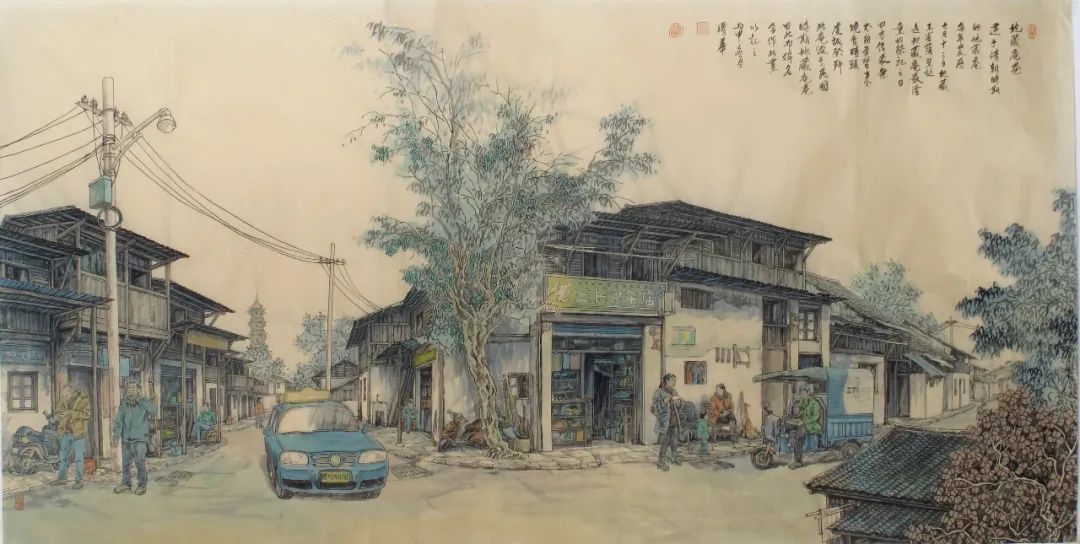
Dizang'an Lane (painted by Li Yuehua)
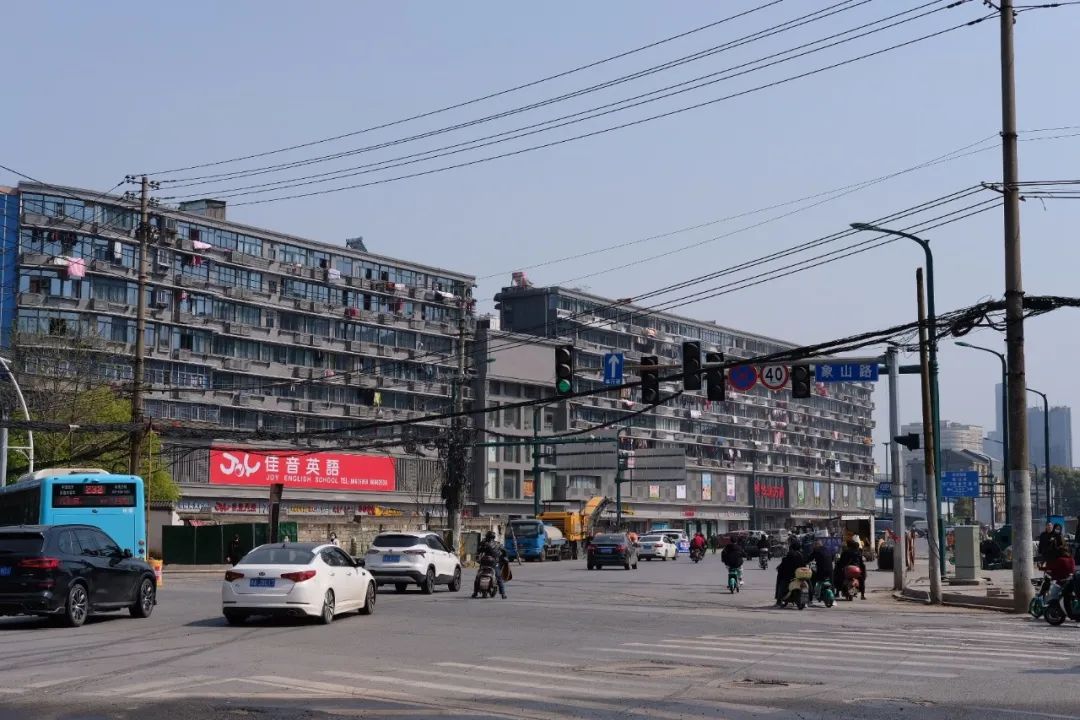
Xiangshan Road is undergoing major repairs
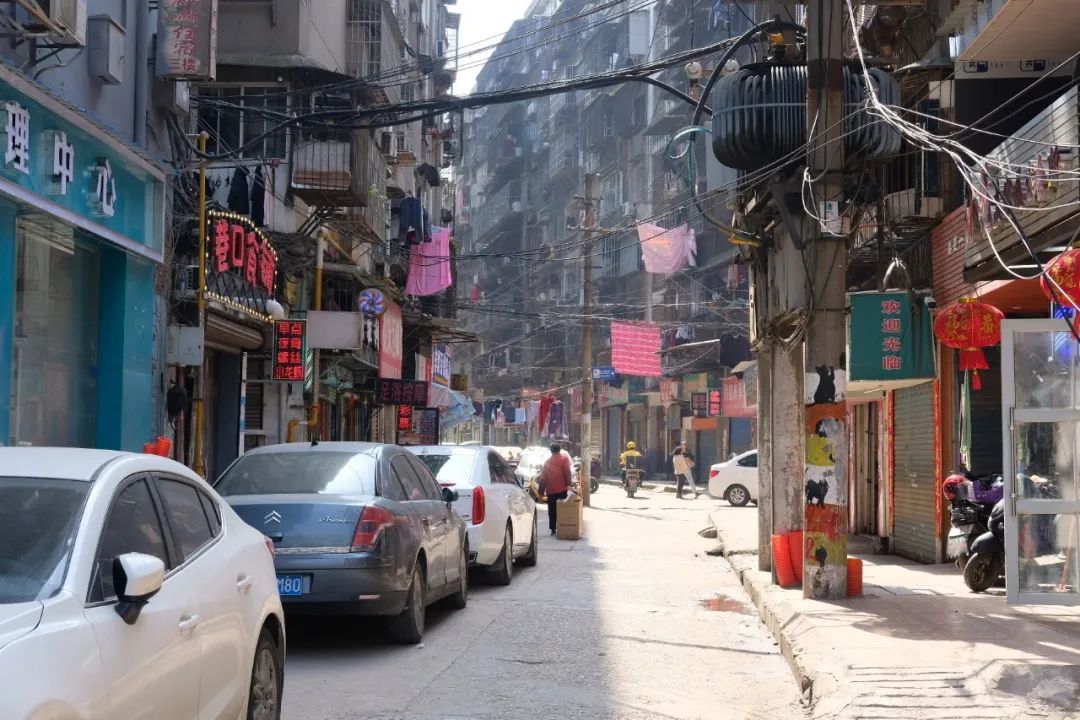
Looking from Xiangshan Road to Chuanshan Road
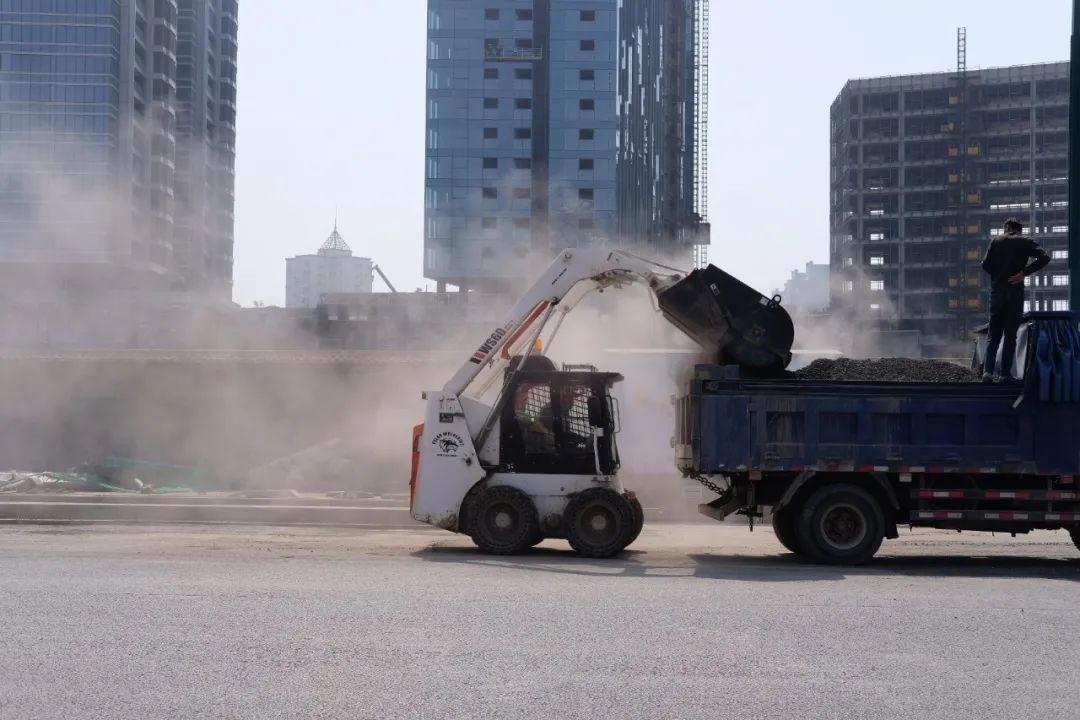
In addition to preventing the new coronavirus, wearing a mask can also help keep away dust

Greenland Group has built a commercial area near Liuyanjing subway station
"In the alleys in the city, there are many places with a well. The Brown Hat Lane, Ba Mao Lane, and Yangzi Lane where I lived all have single wells. The only difference is the size of the well circle. There are six wells in one place at the same time. Nanchang is a unique place. In the past, Nanchang people fetched water, pounded clothes, washed rice, bathed, washed vegetables, chatted and played here. The hot scene seemed to paint a vivid picture of the market for my parents. I still live in Sanyanjing Street adjacent to Liuyanjing. Every Sunday when I go to see my parents, I have to pass through Liuyanjing to get to Sanyanjing. The Ganjiaqian Lane that I pass through is, I think, the most popular street in Nanchang today. The oldest and most smoky old streets and alleys have remained almost unchanged for decades and still retain the street appearance of the 1960s and 1970s. There are old barber shops, wreath shops, restaurant shops, Golden Corner shops, Scrap shops, food stores, spicy chestnut shops, pig blood noodle shops, Xiong’s clinics, Hongji housing agencies and smoky small restaurants. There is a sesame seed cake seller at the entrance of the alley and an old sewing machine on the street. By the dock. Walking in the alley in front of Ganjia, especially in the summer afternoon or early spring evening when the lights are on, it seems that the scene of old Nanchang people’s life has not changed at all, and there are still blue-edged porcelain on the streets. There was a naughty boy who was filling a bowl of water and wine for his father, and a man who was slowly mending rubber tires, chatting with others, and a long voice calling the children home for dinner could be heard in the distance.
——Cheng Wei "Nanchang People"
Alas, reading the above paragraph makes people fall asleep.
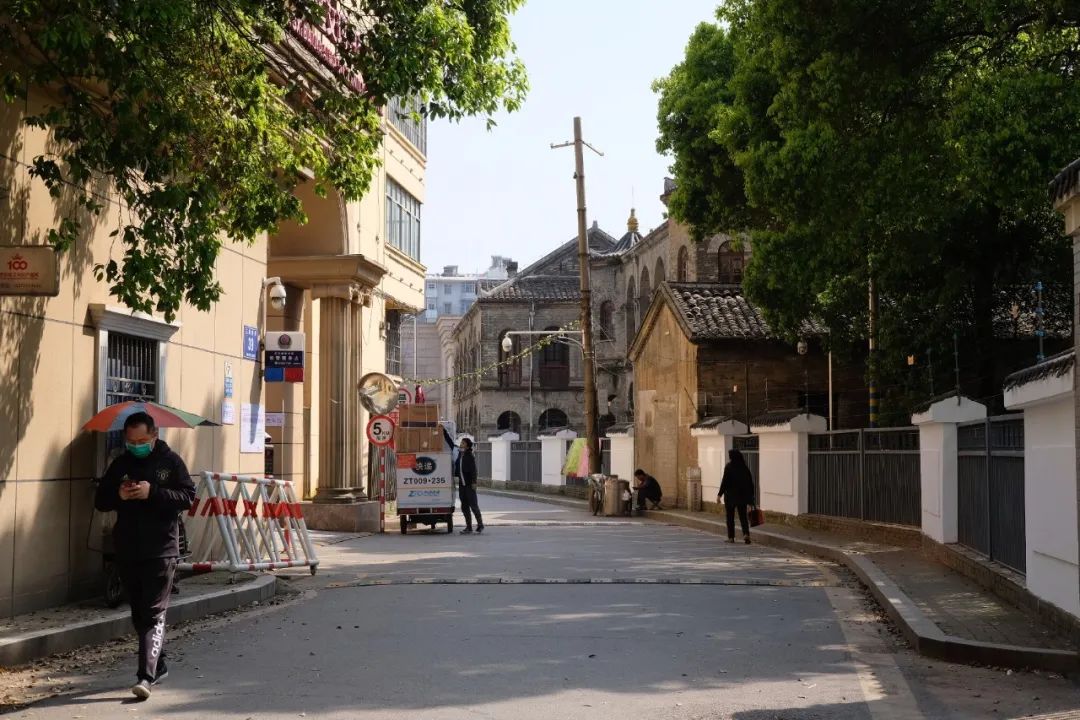
Turn from Sanyanjing Street to Youzhu Road
This road is very quiet. There is an uncle selling baked potatoes sitting on the roadside.
On the right is the former site of the New Fourth Army headquarters, which was formerly Zhang Xun's residence.
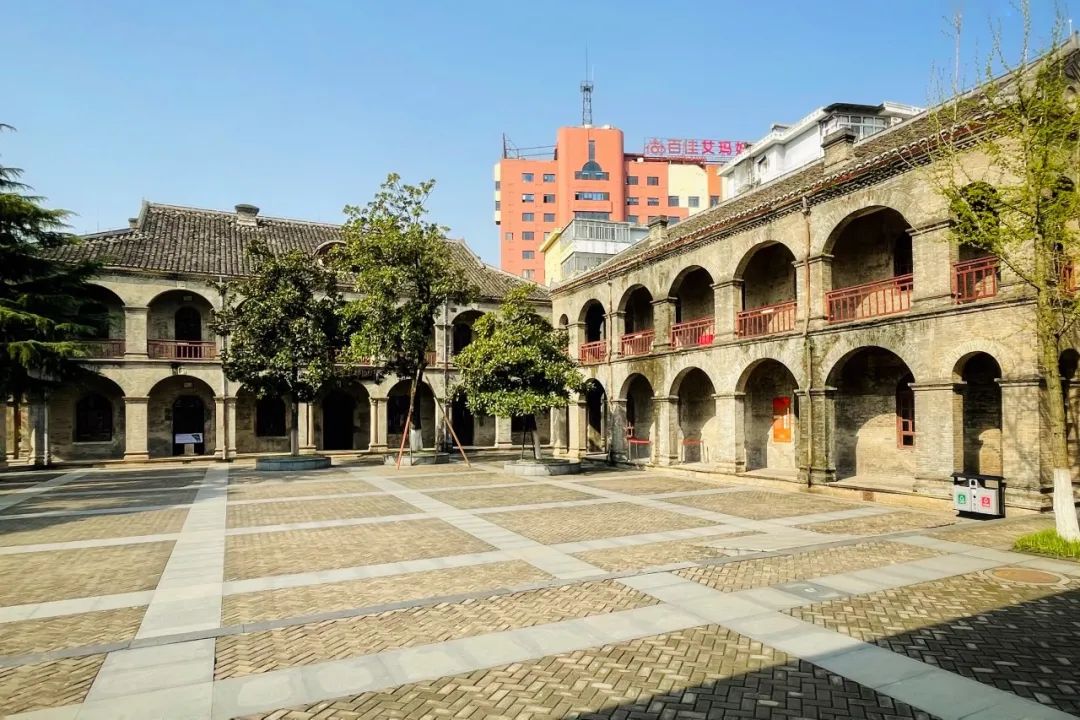
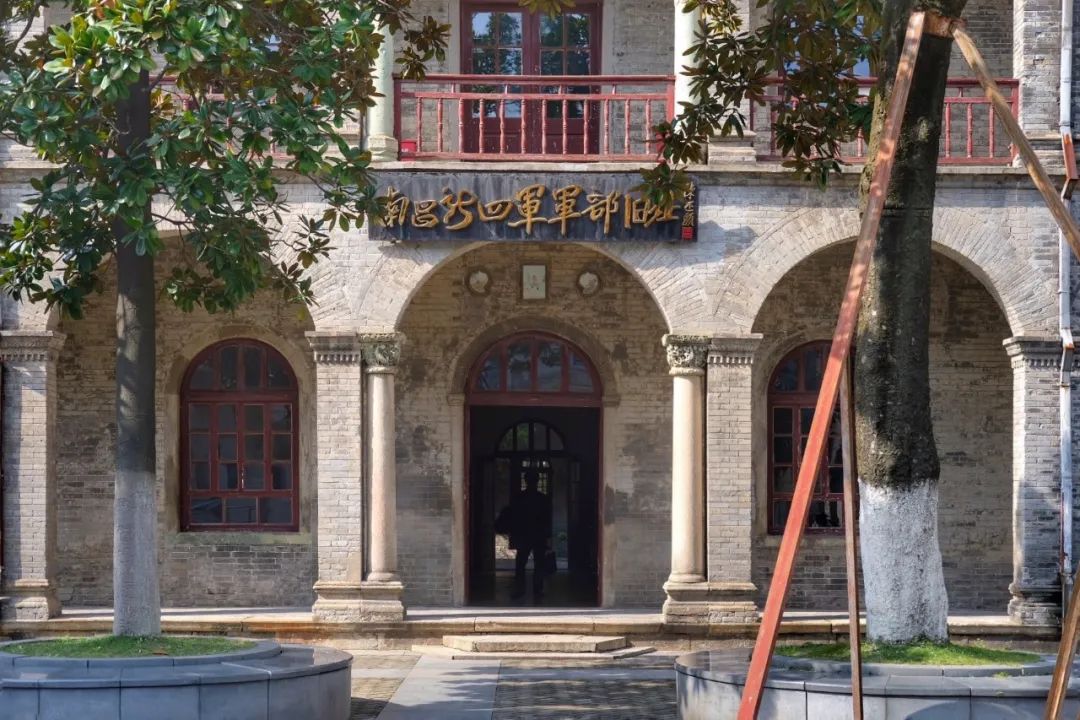

You can enter the memorial hall with your ID card. It has two buildings, a newly built exhibition hall and an old building that reproduce the display of the year. The exhibition hall tells the complete history of the New Fourth Army. As a person whose military knowledge is limited to brigade commander, battalion commander, platoon leader and squad leader, which one is bigger or smaller, I wouldn’t have stayed here for a long time if it hadn’t been for the strong sun outside. , the logic of the exhibition content is actually very clear, and the quality is not low. I took all the blind military licenses and realized that the New Fourth Army was originally a force that stayed in Fujian and Jiangxi to fight guerrillas after the Red Army went on the Long March - although now there are two Worship, the ocean of knowledge evaporated again...
The south gate of the memorial hall is on Dongshuyuan Street. A few dozen meters to the east from the south gate are the former sites of the Southeast Branch of the CPC Central Committee and the former site of Yuzhang Academy. When I came back and found it, I regretted not going over to take a look.
In the history of Nanchang City, Academy Street was once a gathering place for wealthy families. It was full of scholarly families with deep residences. Yuzhang Academy was built in the Southern Song Dynasty. It is said that Lu Jiuyuan came here. 8 They should have visited all the major academies in Jiangxi. It's all over. If the barbarians of the Yuan Dynasty hadn't destroyed the Southern Song Dynasty, those German philosophers wouldn't have had anything to do! Expanded...
Shuyuan Street is also related to the former site of the New Fourth Army headquarters, namely Zhang Xun’s Mansion. I found it interesting, so I posted it here:
"Xu Zhenke in the Qing Dynasty was a high-ranking official who lived in Xuyuan Street. He and Li Hongzhang came from Zeng Guofan's sect and served as governor of Guangdong. His mansion later became the location of the fourth grain depot on Xuyuan Street. Jiangxi Feng Xinren "Braided Handsome" "Zhang Xun was once his disciple. Zhang Xun benefited from him for his debut. It was Xu Zhenke who introduced Zhang Xun to Li Hongzhang. When Zhang Xun became prosperous, he came back to pay homage to his mentor. It is said that Xu Zhenke did not allow him to see him after he surrendered. It was not until Zhang Xun resigned from office. He changed into plain clothes and claimed to be a disciple before he could enter. The mansion Zhang Xun built after his fall was located in Youzhu Garden, which is connected to Shuyuan Street in the south and Sanyanjing in the north. "(Cheng Wei, "Nanchang People")
This story is written with ambiguity because the time points are not clearly explained. Zhang Xun should have been living in Tianjin after his fall. This Zhang Xun mansion was built in 1923, and in 1923, the braided handsome man even had his pigtails raised...
To end here, I took the subway from Liuyanjing to Yangming Road Station and wanted to visit Shawo. LonelyPlanet said that it used to be a villa area in the Republic of China. I also saw a very strange road name on Baidu Map: Once you pass the road, you will see Shawo. Wei Road, Erjing Road, Erwei Road... There is Dai Li Mansion on Erwei Road. I imagined it to be similar to Yihe Road in Nanjing, but when I got off the subway and walked over, Mao didn't even see it. It was all a new community.
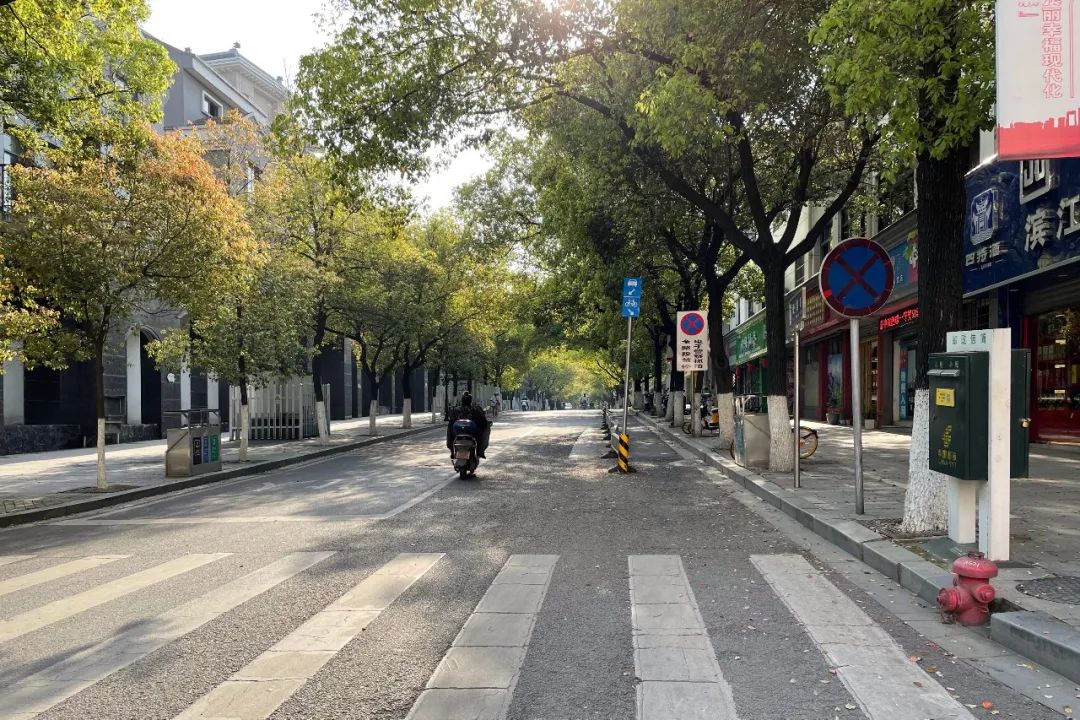
So dear netizens, is there anything to see in Shawo?
In China, cities are being built faster than LonelyPlanet can be reprinted
I was unwilling to leave, so I rented a battery car and drove around. In this place where the longitude and latitude are as clear as a globe, I drove downhill along Shangxiashawo Road and Patriotic Road with unskilled driving skills, like a bulky car. The ostrich, one moment kicking its neck at a snail's pace, and the next moment it becomes bolder and spreads its wings in the wind. It was dusk at that time, "Shuaijia Slope" was shrouded in the bright golden light, and rows of private houses whirred past me. However, adults rushing home and children after school passed me one by one, and I didn’t know where I was going. There was something strange about riding a scooter in an unfamiliar environment, and being possessed by another self in a parallel world. sense of accomplishment. boom! After all, patriotic road riding turned out to be Victory Road and Yangming Road. In the first year of Emperor Xiaozong's reign (1488) Wang Yangming came to Nanchang to marry his wife. One night, he also rode like this crazy to Tiezhu Wanshou Palace. , stayed up all night discussing health-preserving techniques with the Taoist priest, and almost missed the wedding night... Later, Wang Yangming reflected on his impulse and invented the theory of the unity of knowledge and action (this paragraph is purely nonsense on my part).
It seems that there is nothing in Shawo, so after finishing at the former site of the New Fourth Army headquarters, it is better to go to Bayi Square.
